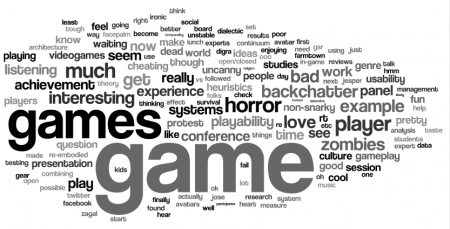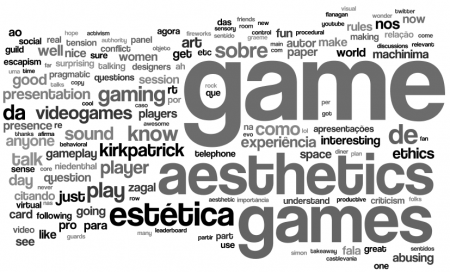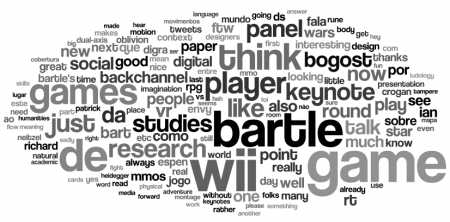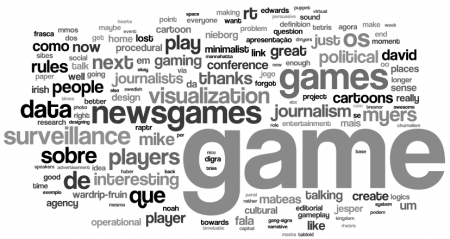Some thoughts from the Bad Games Panel I participated in at the DiGRA conference last month. My co-panelists were Jason Begy, who presented We’ll get through this together: Bad Games and Social Settings and Matthew Weise who presented on Bad Games – Just Like Bad Movies. An Example of Paracinematic Practice in Game Culture.
The Possibility of Paragaming
In the panel, we discussed the possibility of enjoying games that are considered “bad”, or low quality according to whatever criteria we use. We could call this paragaming, following the idea of paracinema discussed below. (The films of Ed Wood are probably the best known examples of paracinema.) Paragaming, on the other hand, has gained little recognition, but it does exist once you start looking.
We chose two quite straightforward starting points:

1) Susan Sontag’s classic 1964 essay Notes on ‘Camp’, in which she identifies camp:
“Not only is there a Camp vision, a Camp way of looking at things. Camp is as well a quality discoverable in objects and the behavior of persons. There are “campy” movies, clothes, furniture, popular songs, novels, people, buildings. . . .“
<- This is a Tiffany Lamp, which Sontag says is part of the Camp canon.
 2) Jeffrey Sconce’s 1996 article ‘Trashing’ the academy: taste, excess, and an emerging politics of cinematic style in which he discusses (among other things) paracinema, a kind of (alleged) subversive inversion of the taste hierarchy of film. In which he writes about the paracinematic audience:
2) Jeffrey Sconce’s 1996 article ‘Trashing’ the academy: taste, excess, and an emerging politics of cinematic style in which he discusses (among other things) paracinema, a kind of (alleged) subversive inversion of the taste hierarchy of film. In which he writes about the paracinematic audience:
“… this audience would be more inclined to watch a bootlegged McDonald’s training film than Man with a Movie Camera, although, significantly, many in the paracinematic community would no doubt be familiar with this more respectable member of the avant-garde canon.”
Choosing the Flawed Clone over the Perfect Original
With that, the questions become:
- How can we enjoy games that we consider “bad” according to a given taste?
- What is the taste against which we can rebel by playing games hitherto considered unworthy of playing?
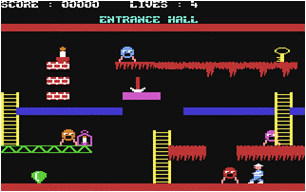
An example: China Miner, above, is a ridiculously hard 1984 Commodore 64 game. Hard to the point where it is certain that nobody every completed the game’s 40 levels without resorting to some sort of cheat mechanism. In fact, I find it unlikely that anybody even completed the first five levels without using cheats. (The game didn’t come with cheat codes – cheats had to be created by disassembling and modifying the game, which I personally spent a good deal of time doing.)
If you haven’t heard of China Miner before, it’s probably because it is a low-quality clone of the classic game Manic Miner. Manic Miner revolutionized the platform game with its zany British humor and intricate level design. Manic Miner is clearly a good game, by any standard. You would then be likely to think that Manic Miner was more enjoyable than China Miner… but it isn’t. Playing Manic Miner is drudgery, a game that falls neatly within the boundaries that it has set for itself.
China Miner, on the other hand, is exhilarating, a game that creates wow moment after wow moment. I have had much more enjoyment playing China Miner than I have had playing Manic Miner. Where Manic Miner is perfect at what it tries to do, China Miner is a radically flawed copy. But its flaws makes it interesting, open to discussion, it makes you want to find yet another incredibly bad game design decision, to show the game to new people who haven’t seen it. I much prefer this flawed clone to the perfect original.
What is there to Rebel Against?
This elaboration of the enjoyable qualities of China Miner is an example of such paragaming: The game fails by a number of the criteria that we tend to take for granted, but that is exactly why it is so enjoyable. Here is a list of quality criteria that the game fails to live up to:
- Don’t break control conventions without reason [possible the only game ever where jumping requires pressing up and pressing fire].
- Don’t kill player within the first few seconds.
- Have sound [only sound is a looping rendition of a ragtime tune].
- Difficulty curve should be a rising slope. [Some subsequent levels easier than level 1].
- Save expert moves for later levels.
- Don’t let players make early mistakes that are only apparent much later.
- It should be possible to complete a game.
So what I have done here is to rebel against the taste of Good Game Design. Here, then, is what a short manifesto of paragaming could look like:
We all know that games should have reasonable interfaces, good learning curves, worlds that make sense on some level, player feedback, and so on. But you know what, screw that! Give me unreasonable games that don’t work, that defy conventions, that require me to squint at horrible graphics, to cringe at looping music, to fight against illogical interfaces, and to seriously consider what I am doing: real games, really bad games.

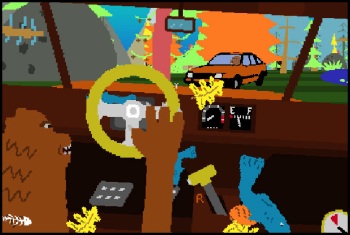 Take, for example, Enviro-Bear. You have forgotten to prepare for winter and must collect food and get back to your cave before winter comes. In a car. Avoiding the other cars, also driven by bears.
Take, for example, Enviro-Bear. You have forgotten to prepare for winter and must collect food and get back to your cave before winter comes. In a car. Avoiding the other cars, also driven by bears.
 2) Jeffrey Sconce’s 1996 article
2) Jeffrey Sconce’s 1996 article 
